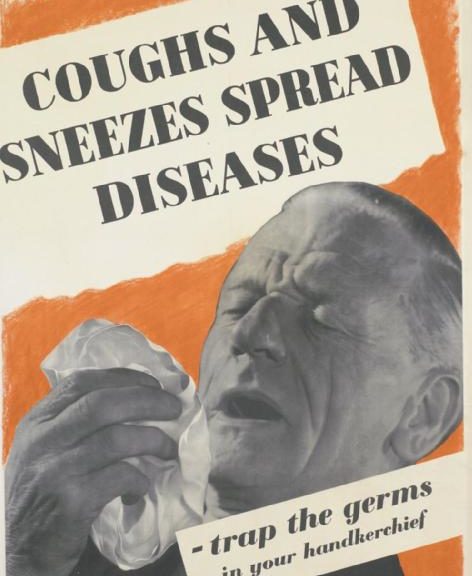
Your Brain Sneezes
It happens to everyone: some stimulus triggers the trigeminal nerve bundle, which in turn signals the sneeze center of the lateral medulla of the brain stem. The nervous functions of the brain stem are the most basic and powerful in the body so once the sneeze center has been stimulated, the rest of the sneeze reflex is unavoidable.
- Instructions are sent from the brain stem to the lungs to suck in air.
- The glotis – the opening at the top of the windpipe between the vocal cords – closes.
- The eyes involuntarily close and various facial and adomenal muscles spasm, forcing the air in the lungs to sudden blast through the glottis and out the nose and mouth, expelling mucus as well as any phlegm and foreign nasal irritants that might be present.
People who get brain stem glioma (a type of brain cancer) often lose the ability to sneeze. It’s your brain that controls the sneeze, not your nose.
The common causes of the sneeze start with irritating what’s inside your nose; but not all sneezes have their origins with your nasal passages, as anyone who has every sneezed because of bright light or eating can attest.
Most people think that sneezes are something tied to noses, but in reality a sneeze is something that really happens in the nervous system. Look at nasal irritants:
- Accidentally breathing in something spicy like pepper is the classic example of an airborne irritant that triggers a sneeze.
- When those nasal membranes become really annoyed and inflamed, the trigeminal nerve signals the sneeze center to have the unwelcome airborne guests in your nose expelled.
- Hayfever and other allergens cause sneezing in a slightly more complicated manner. In allergic rhinitis, the airborne allergen causes the production of histamine which in turn irritates the nasal mucosa, stimulating the trigeminal nerve and signaling the sneeze center.
It doesn’t matter is it’s the common cold or influenza, the viral and bacteria infections of the respiratory track cause congestion and inflammation of the sinuses and nasal membranes. Once the nose is irritated enough, sneezing is one of the usual symptoms. Thankfully, most respiratory infections are over in 10 to 14 days. Until it’s over, though, the sneezing of colds not only expels mucus and phlegm but also the bacteria and viruses behind an infection. Sneezing is one of the ways that colds and flu are spread from person to person: the germs expelled by a sneeze can go infect other people, which is why you should always try to sneeze into a handkerchief or tissue – or barring that, your sleeve.
Yuck.
